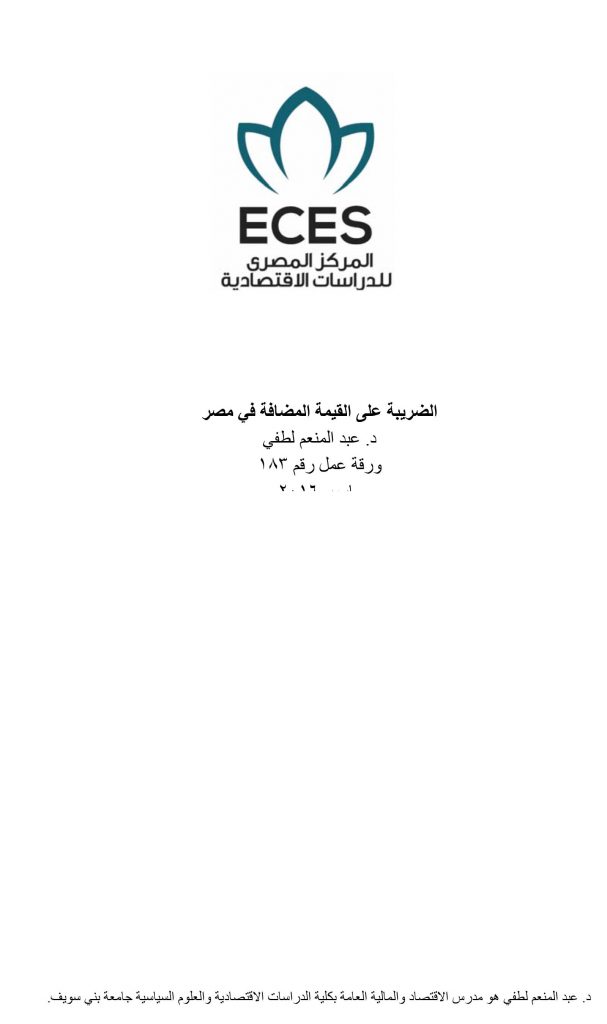In March 2016, important changes have been made to the economic team of the Egyptian government with a view to continuing the economic reform programs, with targets for increasing economic growth and promoting employment. One of the main pillars of this economic reform is fiscal policy reform as the Ministry of Finance aims to modernize the tax system. One important step is to introduce the value added tax (VAT) in place of the current Egyptian Sales Tax (EST). Therefore, the study discusses the structure of the sales tax in Egypt that causes problems such as economic distortions, tax cascading, and inequity of the tax system resulting from excluding several activities, especially in services, from the sales tax. Consequently, the first step to implement the VAT in Egypt is to calculate the VAT base. The study chooses to calculate the VAT base using both production and consumption methods. The results shows a small difference in estimations between the two methods. Finally, the study gives some recommendations to Egyptian policymakers with respect to the new VAT system and VAT rates.

Value Added Tax in Egypt
09-03-2016
Author(s): Dr. AbdelMoneim Lotfy
Publication Number: ECES-WP183-A
